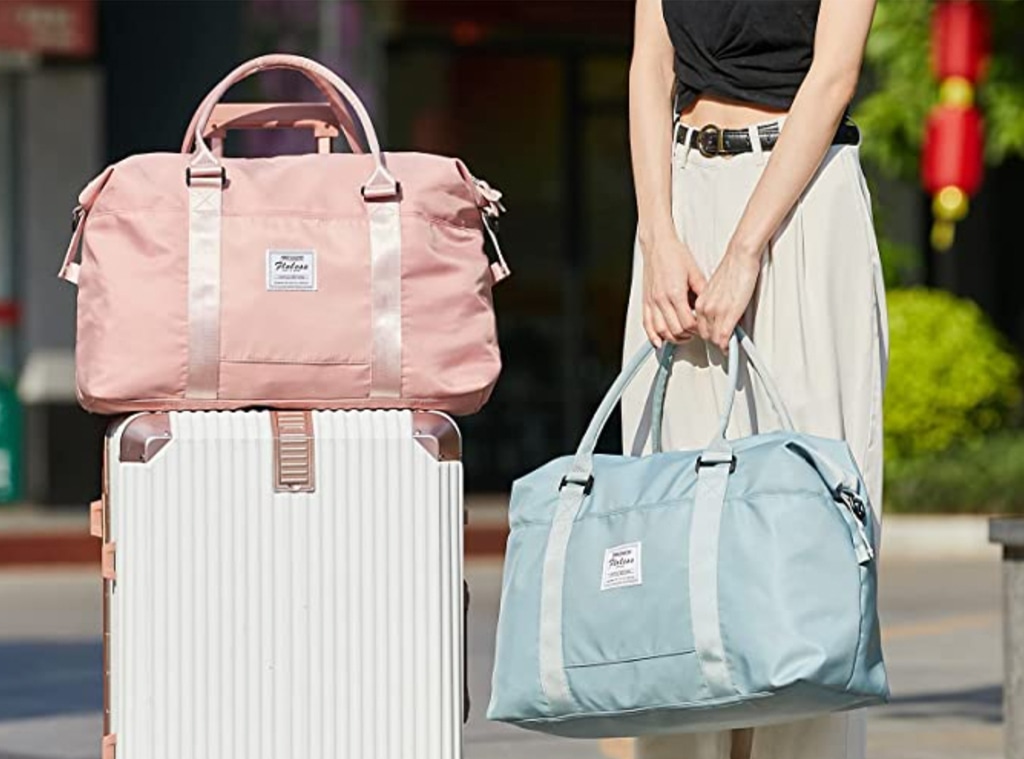Understanding the Versatility of the Travel Duffel
The enduring popularity of the travel duffel bag stems from its inherent adaptability. Unlike rigid suitcases, duffels offer a malleable structure that can conform to tight spaces, making them ideal for overhead compartments, car trunks, and even crowded hostels. Their soft construction often allows for more efficient packing, enabling you to squeeze in those last-minute essentials. Furthermore, many modern travel duffels come equipped with a plethora of features that enhance their functionality, blurring the lines between a traditional duffel and a more structured piece of luggage.
Flexibility in Shape and Size: Unlike rigid suitcases, duffels can adapt to the contents, making them easier to maneuver in tight spaces.
Lightweight Design: Generally lighter than their wheeled counterparts, duffels allow you to maximize your packing capacity without exceeding weight restrictions.
Multiple Carrying Options: Many travel duffels feature both grab handles and a shoulder strap, offering versatility in how you carry your load. Some even incorporate backpack straps for hands-free convenience.
Durability: Constructed from robust materials, quality duffel bags are built to withstand the rigors of travel, from rough handling at airports to unpredictable weather conditions.
Key Considerations When Choosing Your Travel Duffel Bag
Selecting the right travel duffel requires careful consideration of your individual needs and travel style. Several crucial factors come into play:
1. Size and Capacity: Finding the Perfect Fit
The size of your duffel bag is paramount and should align with the duration and nature of your trips. For weekend getaways or as a supplementary carry-on, a smaller duffel in the 30-50 liter range might suffice. For longer excursions or when you need to pack more gear, consider options between 60 and 90 liters. For truly extensive travel or specialized equipment, some duffels can exceed 100 liters. Always check airline carry-on size restrictions if you intend to bring your duffel on board.
2. Material Matters: Durability and Weather Resistance
The material composition of your travel duffel directly impacts its durability and ability to protect your belongings. Common and high-quality materials include:
Nylon: Known for its strength, abrasion resistance, and relatively light weight. Look for higher denier ratings (e.g., 900D, 1000D) for increased durability.
Polyester: A more budget-friendly option that still offers good durability and water resistance. Similar to nylon, higher denier indicates better quality.
Canvas: A classic material that is rugged and develops character over time. Often treated for water resistance.
Tarpaulin/PVC: Highly water-resistant and easy to clean, making it ideal for outdoor adventures or wet environments.
Consider whether you need a water-resistant or fully waterproof duffel based on your travel destinations and activities. Features like taped seams and waterproof zippers can provide added protection.
3. Carrying Options: Comfort and Convenience
The way you’ll be carrying your duffel is another critical factor. Evaluate the available carrying options:
Grab Handles: Essential for lifting and short carries. Look for padded handles for added comfort.
Shoulder Strap: A detachable and adjustable shoulder strap offers hands-free carrying. Wider, padded straps are more comfortable for heavier loads.
Backpack Straps: Increasingly common, especially in larger travel duffels, backpack straps provide excellent weight distribution and freedom of movement, ideal for navigating airports or walking longer distances. Ensure the straps are padded and the back panel is comfortable.
4. Features and Functionality: Enhancing Your Travel Experience
Modern travel duffels often come equipped with features designed to streamline your packing and travel experience:
Multiple Compartments: Separate compartments help organize your belongings and prevent them from shifting during transit. Look for dedicated shoe compartments, wet/dry compartments, and internal pockets for smaller items.
External Pockets: Quick-access pockets are useful for storing items you need readily available, such as water bottles, travel documents, or electronics.
Compression Straps: Both internal and external compression straps help secure your load, reduce bulk, and prevent items from moving around.
Lockable Zippers: Enhance security by allowing you to attach a padlock to deter theft.
Stowable Straps: If your duffel has backpack straps, the ability to stow them away can be useful when checking the bag or for a cleaner look.
Reinforced Base: A durable and often water-resistant base adds protection and stability to the bag.
5. Brand Reputation and Reviews: Investing in Quality
While budget is a consideration, investing in a reputable brand often translates to higher quality materials, better construction, and more thoughtful design. Research different brands known for their travel gear and read reviews from other travelers to gauge the durability and functionality of their duffel bags.
Top Types of Travel Duffel Bags for Different Needs
The market offers a variety of travel duffel bags tailored to specific purposes:
Carry-on Duffels: Designed to meet airline size restrictions for carry-on luggage, these duffels maximize packing space while remaining compliant.
Wheeled Duffels: Combining the capacity of a duffel with the convenience of wheels and a telescoping handle, ideal for navigating airports and smooth surfaces.
Backpack Duffels: Featuring comfortable and stowable backpack straps, offering versatility for different carrying preferences.
Waterproof Duffels: Constructed from waterproof materials with sealed seams and zippers, essential for water-based activities or travel in wet climates.
Adventure Duffels: Rugged and durable duffels built to withstand the demands of outdoor adventures, often featuring extra reinforcement and specialized compartments.
Garment Duffels: Designed with a separate compartment for hanging clothes, helping to keep them wrinkle-free during travel.
Caring for Your Travel Duffel Bag: Ensuring Longevity
Proper care will extend the life of your travel duffel bag. Here are some tips:
Empty and Clean Regularly: Remove all contents after each trip and wipe down the interior and exterior with a damp cloth.
Address Stains Promptly: Use a mild detergent and a soft brush to gently clean any stains.
Air Dry: Avoid using a dryer, as heat can damage the materials. Allow your duffel to air dry completely.
Store Properly: When not in use, store your duffel in a cool, dry place, preferably in a dust bag to protect it.
Inspect Regularly: Check for any signs of wear and tear, such as loose seams or damaged zippers, and address them promptly.




